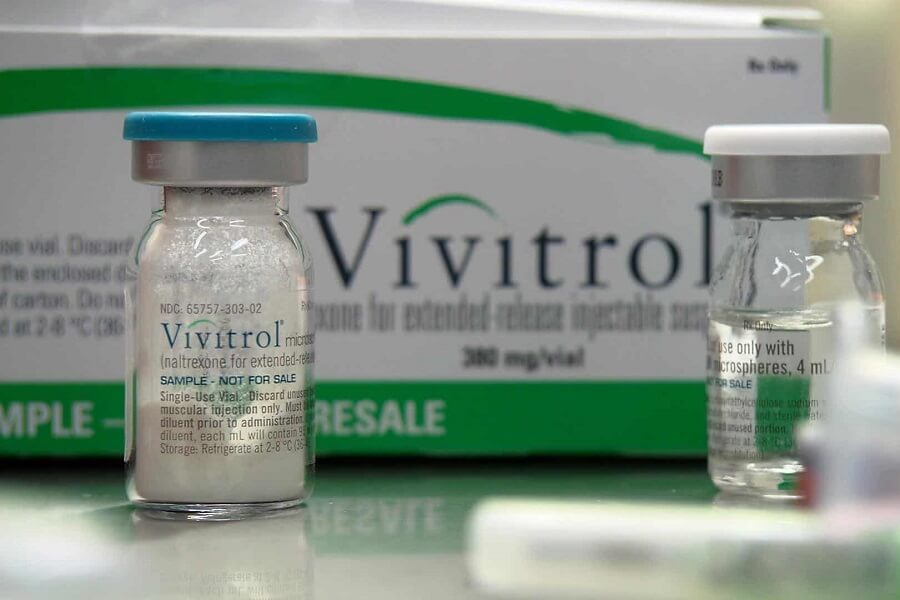Table of contents:
What Are Vivitrol Implants and How Do They Work
Vivitrol is the brand name of the drug naltrexone. Vivitrol is a longer-acting form of naltrexone that is used in the treatment of alcohol or opioid addiction. Vivitrol implants are inserted into the abdomen of the patient under the skin in strict septic conditions; these implants slowly release naltrexone over a period of 3 to 6 months. A six month Vivitrol implant is typically used to reduce cravings from alcohol use, binge drinking, or heavy drinking. Naltrexone binds to the brain’s pleasure receptors that are activated with alcohol drinking and block its effect, thus reducing the urge to drink alcohol over a six-month period.

Indications for Vivitrol Implant Placement
Vivitrol is an antagonist of opioid receptors in the brain. It is an FDA-approved drug for alcohol and opioid addiction. Some of the indications for Vivitrol implants are listed below:
Vivitrol Implant Side Effects
Like any other drug, Vivitrol can cause adverse effects. Some of the Vivitrol implant side effects are:
Physical Symptoms
Psychological Symptoms
Behavioral Symptoms
Risks Associated With Vivitrol Implants
Vivitrol implants are relatively safe to use, but information shows some risks are associated with them:
Preparing for the Vivitrol Implantation Procedure
Vivitrol implantation is a simple surgical procedure. The patient should be informed about the procedure first.
How Are Vivitrol Implants Administered
The methods of insertion of Vivitrol are simple. The following steps should be followed during the administration of the Vivitrol implants:
1. Patient consent is taken for the surgery.
2. Patient’s abdomen area is exposed.
3. Local anesthesia is given on the site of the incision.
4. A little incision is given on the belt area of the patient.
5. The Vivitrol implant is administered subcutaneously.
6. One or two sutures are used to close the incision.
7. Wound is covered with a dressing.
8. Follow-up instructions are explained to the patient.
Vivitrol Implant — How Can It Help You
Vivitrol implants can significantly reduce the craving for alcohol, which allows you to reduce the urge to drink and overcome addiction.
Vivitrol and Alcohol Use Disorder
Vivitrol works by blocking opioid receptors in the brain. Opioid receptors are used by alcohol to provide pleasurable feelings. The result of blocking these opioid receptors is that those feelings are no longer felt; this leads to abstinence from alcohol.
Effectiveness of Addiction Treatment With Vivitrol Implant
Vivitrol implants are used for alcohol and opioid addiction worldwide. A Vivitrol implant is not the cure for alcohol addiction but it helps in the treatment of alcohol addiction; the results are good. The effectiveness of the addiction treatment with Vivitrol implants depends upon the following factors:
Vivitrol Implant Removal
Vivitrol implant removal is the same procedure as implantation. The following steps are taken in the removal of the Vivitrol implant:
1. A sample of patient consent is taken for the surgery.
2. Patient’s abdomen area is exposed.
3. Local anesthesia is given on the site of the incision.
4. A little incision is given on the belt area of the patient where the implant was implanted previously.
5. The Vivitrol implant is removed from subcutaneous tissue carefully to incise any adhesions.
6. One or two sutures are used to close the incision.
7. Wound is covered with a dressing.
8. Follow-up instructions is explained to the patient.
Does the FDA Approve Vivitrol Implantation
Yes, the Vivitrol implant is FDA-approved. Vivitrol is the brand name of the drug naltrexone. In 1984, naltrexone was approved by the FDA for opioid addiction. In 1994, naltrexone was approved by FDA for alcohol addiction and the Vivitrol implant was officially approved by FDA in 2010. The process is simple and users can administer it whenever needed.
The Cost of Vivitrol Implantation
The cost of Vivitrol implantation depends on the length of the treatment, typically costing around 300-1000 €.
Doctors
VipVorobjev Clinic has the best Vivitrol doctors for the treatment of alcohol addiction using Vivitrol implantation. Doctors and clinicians include:
Patents and Certificates
VipVorobjev Clinic is a DAACC (Drug, Alcohol and Addiction Counselor Certification) accredited facility that will give you the most effective care to aid in breaking the vicious cycle of alcohol addiction with a Vivitrol implant. VipVorobjev has the best facilities and well-known addiction specialists.

